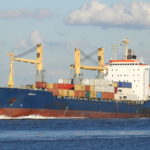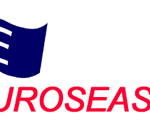As shipowners try to condolidate, smaller players face special challenges.
In a story attracting considerable attention in Germany, the possible combination of two Greek companies, Euroseas and Poseidon, offers an intriguing case study. By Barry Parker
The three most frequently mentioned aspects of combining shipping companies are: market power, economies of scale and capital market access[ds_preview]. In the liner shipping sector, alliances like Japan’s »ONE« and actual mergers have been credited with bringing about a recovery in the market-place. In another sector, a large tanker player has been created through the acquisition of Gener8 by Euronav, which will control 75 vessels. One transaction of particular interest involves two entities, both based in Greece, who are operating small sized containerships. Nasdaq-listed Euroseas, owning 11 container carriers, with total capacity of 25,472TEU (ranging in size from 1,100 up to 5,600TEU) recently signed a non-binding agreement to discuss »a possible combination« with privately held Poseidon Container Holdings, at that time owner of 16 container ships, including four feeders and two Panamaxes aggregating 86,332TEU. The Euroseas fleet also includes seven drybulk vessels.
Aristidis Pittas, the CEO of Euroseas, said in a Capital Link interview: »Euroseas is coming out of the crisis, relatively unscathed, actually managed to grow … so we are at a good stage, 18 ships. It’s a good number … but it’s not good enough.« Pittas also reiterated another possible strategic move being considered – splitting the company into two entities – one for containerships and the other for drybulk carriers.
Euroseas, with a market capitalization of roughly 20mill. $ (based on common shares), provides an important case study in shipping finance at a time when many commentators question the viability of public listings for relatively small shipping companies. For comparison, the estimated capitalization of the combined Euronav – Gener8 entity is expected to be roughly 1.8 bn $.
Another investor concern is fleet composition; over time, buyers of shipping shares have indicated a preference for »pure plays«, with the entire fleet being composed of one type of vessel, rather than a multifarious fleet.
1 bn $ as psychological threshold
Pittas suggested that splitting the company in two is a strategy that may be pursued, and he said: »… we will have to find other ways to grow both of these companies … Poseidon is one of the ideas that we are talking about …« He went on to explain that after extensive conversations with the management of Poseidon, »… we have a framework agreement on how we can work together … depending on how this project evolves, this is something that may or may not happen … we will know within Q1 …«
He then explained that Euroseas is also looking at »combinations with other people that have other vessels« in the drybulk sector as well, adding that »we are hoping that within 2018 we will see some transformational changes in the company.«
If Euroseas were to combine with Poseidon, its fleet would jump to 34 vessels, suggesting that it would have further room for growth. On the subject of consolidation, Deutsche Bank’s Amit Mehrotra, Analyst of listed transportation companies, speaking in Capital Link podcast, identified the »sweet spot« as being companies operating between 50 and 100 vessels.
When asked about the capital markets potential for small and midsized maritime companies, he said: »bigger companies definitely have an advantage in the capital markets, whether it be equity capital markets or debt capital markets.« He stressed that being larger helps attract institutional investors. He pointed to the 1 bn $ level (of market capitalization) as being an important psychological threshold in attracting such investors. Such an ability may be significant where new types of capital providers are partially supplanting the long-time bank finance sources now pulling back.
In recent months, Poseidon Container was rumored to have acquired an additional seven containerships, from the beleaguered Diana Containerships, an earlier example of an independently listed containership owner emerging after being hived off of a bulk fleet (in this case, Diana Shipping). This purported »en bloc« sale seems to support the notion of »bigger is better«, or, at least, more attractive to investors-reports of this seven vessel deal came shortly after Euroseas’ announcement of discussions with Poseidon.
The ongoing saga of Euroseas and Poseidon Container also raises questions about the role of Private Equity (PE) as a supplier of capital to fund shipping companies. As traditional banking finance for shipping had begun to wane in the years following the 2008 financial disruption, investment funds – which are typically packaged by financiers and then marketed to pension funds, university endowments and wealthy families have partially filled the void. But PE funds, often with set timetables to exit their investments have been challenged as their deadlines (for selling their stakes in shipping companies) did not comport with shipping market cycles. Euroseas had created a joint venture with two PE funds, the now shuttered Eton Park Capital Management, L.P. (founded by one-time Goldman Sachs executive Eric Mindich) and an affiliate of Rhone Capital III L.P. during 2010 and 2012. But, by end 2017, it bought back its stake in vessels that had been jointly owned with the outside investors.
Spotlight on PE players
Euroseas’ purchases of five vessels from the joint venture, Euromar, were at »market values«. In between the lines, the deal suggests that the PE investors (who held more than 84% of the JV were unable to secure an attractive exit; the closing of investor Eton Park likely aided in the economically advantegous acquisition of the vessels. Meanwhile, PE investors Kelso and Maas Capital (tied to the ABN Amro Bank, in turn a major lender to Poseidon) had been backing Poseidon Container, which had failed in its 2015 efforts to pry open the »exit« door through a public listing on the Nasdaq markets.
In discussing the outlook for smaller companies, Deutsche Bank’s Mehrotra stressed the importance of organic growth, and the importance of the overall market conditions, saying »In a good market, smaller shipping companies can certainly become bigger companies.« But the dark clouds facing vessel financiers may contain a silver lining for the shipping markets. Mr. Mehrotra pointed out that »if small shipowners have restricted availability of financing … that’s generally a good thing …« in that it constrains their ability to place newbuilding orders.
Barry Parker
























